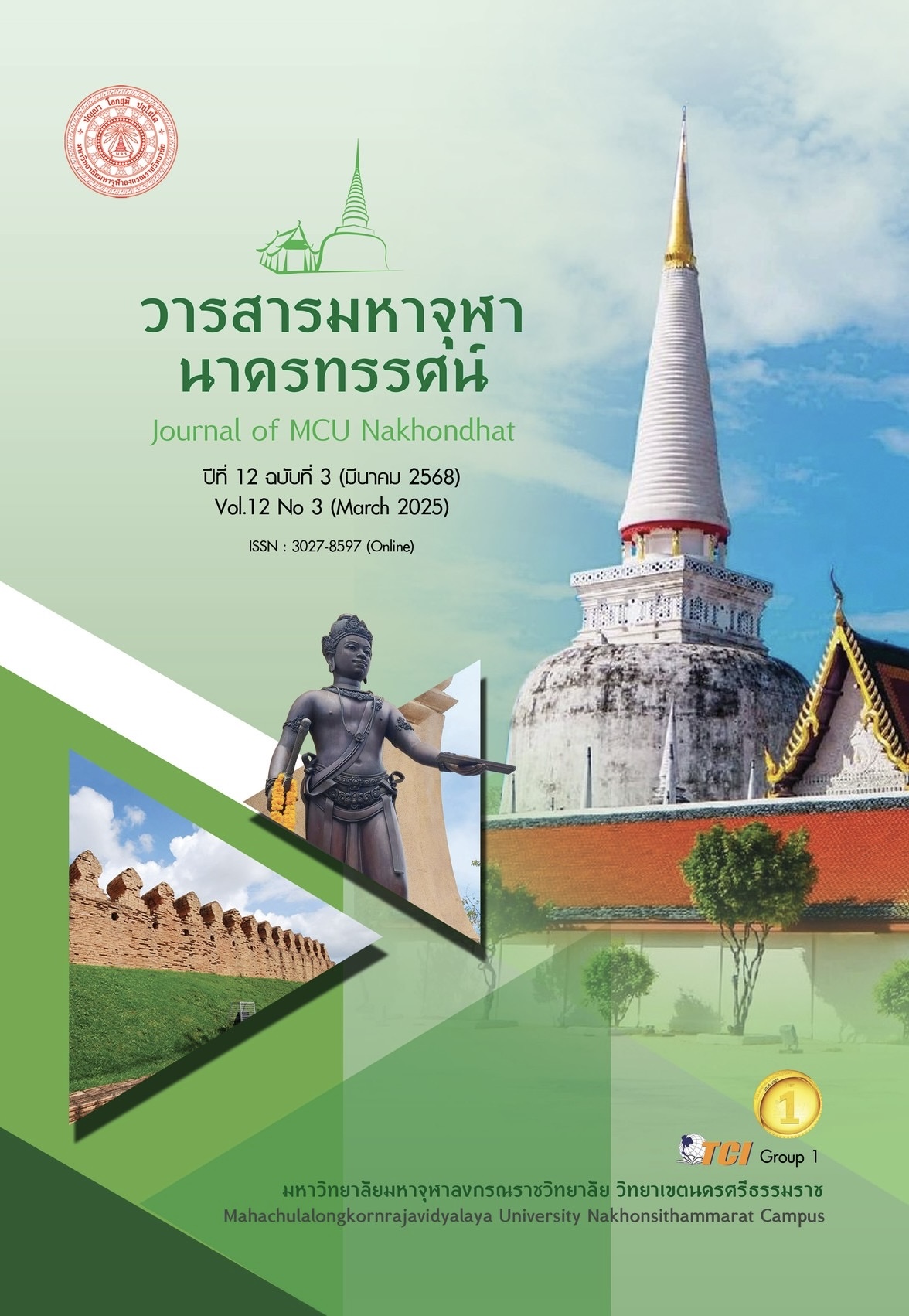DEVELOPMENT OF A CONTEMPORARY ART ACTIVITY MODEL USING MALAYU CULTURE CAPITAL TO PROMOTE ART CREATION ABILITIES OF ART EDUCATION STUDENTS
Main Article Content
Abstract
The objectives of this research are 1) Study and collect knowledge about the development of contemporary art activity formats, 2) Develop contemporary art activity formats to promote creative artistic abilities with Malayu cultural capital for art education students to obtain analytical and synthesis results for activity format development. This research and development used qualitative research techniques in 2 phases as follows: Phase 1. Interview and observe experts. The research instruments are interview forms and observation forms. Phase 2. Development of activity formats. Both phases were analyzed by grouping data and analyzing content. The results of the research objective 1 were to collect guidelines for developing activity formats from interviewing experts. The conclusions are as follows: Malayu cultural capital in creating works should be learned from contemporary art at the international level; Studying cultural capital requires the ability to think and explain concepts before creating works; Appreciation of Malayu culture; Cultural learning resources that are conducive to learning; Students who are suitable for the activities have passed basic subjects before. and the results of the research of the second objective are the activity formats that focus on creating an understanding of the knowledge of contemporary art and the knowledge of Malayu cultural capital and the design of creative activities leading to presentation to the public. There are activity development formats that promote the ability to create artistic works for art students in 4 activities: 1) The Melayu Contemporary Art 2) The Melayu Budaya 3) The Melayu Creative Process and 4) The Melayu Present to the Public. This activity aims to create the greatest benefit, which is the ability to create artistic works of art students.
Article Details

This work is licensed under a Creative Commons Attribution-NonCommercial-NoDerivatives 4.0 International License.
References
เจตนา นาควัชระ. (2546). ศิลป์ส่องทาง. กรุงเทพมหานคร: คมบาง.
ชัยวัฒน์ สุทธิรัตน์. (2558). 80 นวัตกรรมการจัดการเรียนรู้ที่เน้นผู้เรียนเป็นสำคัญ. (พิมพ์ครั้งที่ 6). กรุงเทพมหานคร: ไทยวัฒนาพานิช.
ณายิบ อาแวบือซา. (2564). สถาปัตยกรรมมลายูมุสลิมในพื้นที่ภาคใต้ตอนล่าง. ใน การสัมมนาวิชาการ “ศิลปะอิสลามในพื้นที่ภาคใต้ตอนล่าง”. พิพิธภัณฑสถานแห่งชาติสงขลา.
พิริยะ ผลพิรุฬห์. (2556). เศรษฐกิจสร้างสรรค์กับการพัฒนาประเทศไทย. วารสารเศรษฐศาสตร์ปริทรรศน์ สถาบันพัฒนศาสตร์, 7(1), 1-69.
วิรุณ ตั้งเจริญ. (2554). ศิลปกรรมร่วมสมัย : การเรียนรู้และสร้างสรรค์. วารสารสถาบันวัฒนธรรมและศิลปะ มหาวิทยาลัยศรีนครินทรวิโรฒ, 14(1), 14-20.
สุนิติ จุฑามาศ. (2564). มื่อลมค้านาพานาวาสู่หมู่เกาะ: อิสลามานุวัตรในเอเชียอาคเนย์ในยุคแรกเริ่ม. ใน การสัมมนาวิชาการ “ศิลปะอิสลามในพื้นที่ภาคใต้ตอนล่าง”. พิพิธภัณฑสถานแห่งชาติสงขลาร่วมกับสำนักพิพิธภัณฑสถานแห่งชาติ กรมศิลปากร.
อัญธิชา มั่นคง. (2560). บทบาทของทุนทางวัฒนธรรมกับการพัฒนาเศรษฐกิจ ชุมชน กรณีศึกษาชุมชนในตำบลบ้านตุ่น อำเภอเมือง จังหวัดพะเยา. วารสารวิจัยและพัฒนา มหาวิทยาลัยราชภัฏเลย, 12(39), 90-100.
Bellanca, J. & Brandt, R. (2019). New Future Skills: Education for the 21st Century, Translated from 21st Century Skills Rethinking How Students Learn, Translated by Wongkitrungreung, W and Jittarek, A. Bankok: Open World, 2011.
Chang, R. (2005). Culture and art education in China Education through Art. International Journal of Education Through Art, 1(3), 225-236.
Sternberg, R. J. et al. (2004). Handbook of intelligence. Cambridge: Cambridge University Press.


